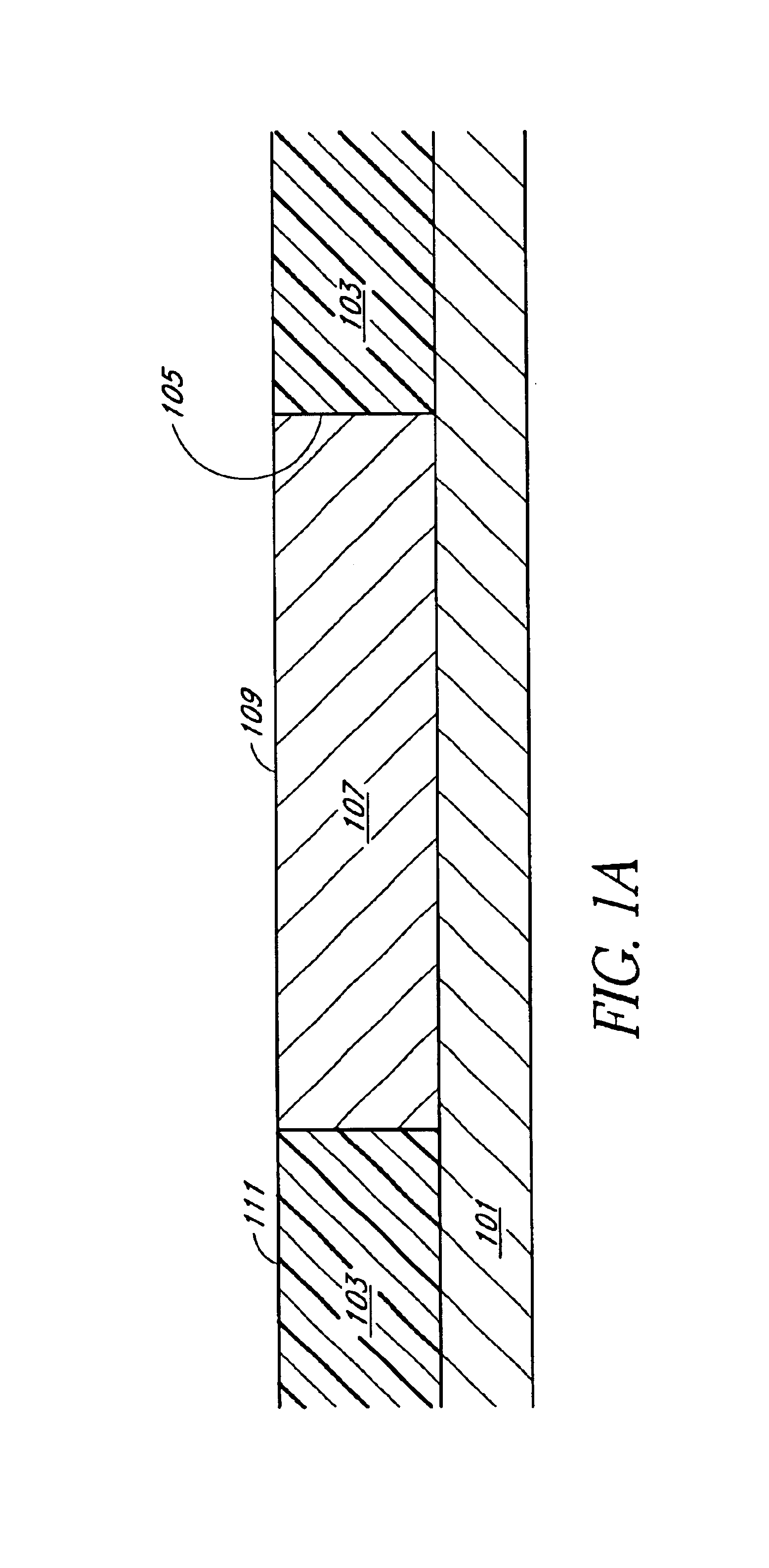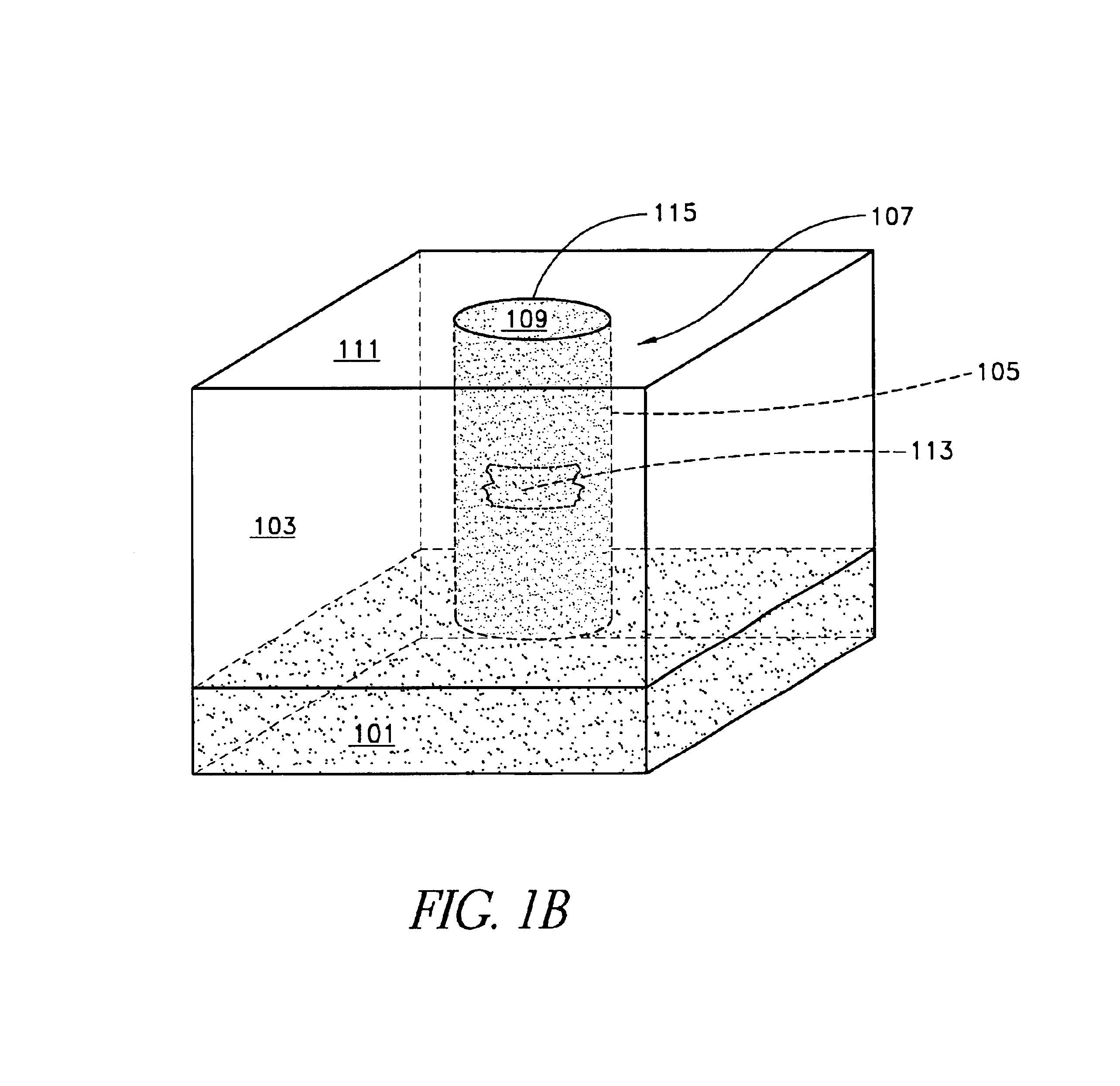Programmable conductor memory cell structure
a programmable conductor and memory cell technology, applied in the direction of digital storage, semiconductor/solid-state device details, instruments, etc., can solve problems such as information loss
- Summary
- Abstract
- Description
- Claims
- Application Information
AI Technical Summary
Benefits of technology
Problems solved by technology
Method used
Image
Examples
Embodiment Construction
For proper functioning of a “programmable conductor” memory cell device, incorporating a glass electrolyte element with an adjustable conductivity, it is important that the conductive pathway growth in response to a particular applied voltage occurs reproducibly and consistently across an array. Low voltages cause slow growth, whereas higher voltages result in faster growth of the conductive path. The amount of growth in a given switching time depends, in part, on the availability of metal ions. Therefore, it is important that the cations come from a controlled source, such as from the solid solution of the cell body or glass electrolyte, which supplies an amount of cations proportional to the concentration therein and to the electric field. If additional cations are supplied from other, less reliable sources, the amount of cations may not be directly and reproducibly related to the strength of the electric field or switching time.
For example, the interface between the cell body sid...
PUM
 Login to View More
Login to View More Abstract
Description
Claims
Application Information
 Login to View More
Login to View More - R&D
- Intellectual Property
- Life Sciences
- Materials
- Tech Scout
- Unparalleled Data Quality
- Higher Quality Content
- 60% Fewer Hallucinations
Browse by: Latest US Patents, China's latest patents, Technical Efficacy Thesaurus, Application Domain, Technology Topic, Popular Technical Reports.
© 2025 PatSnap. All rights reserved.Legal|Privacy policy|Modern Slavery Act Transparency Statement|Sitemap|About US| Contact US: help@patsnap.com



